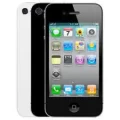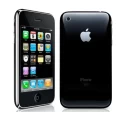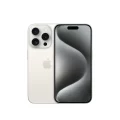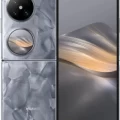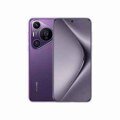- PRODUCTS
- Apple iPhone
- iPhone 5s Price in Kenya
iPhone 5s Price in Kenya


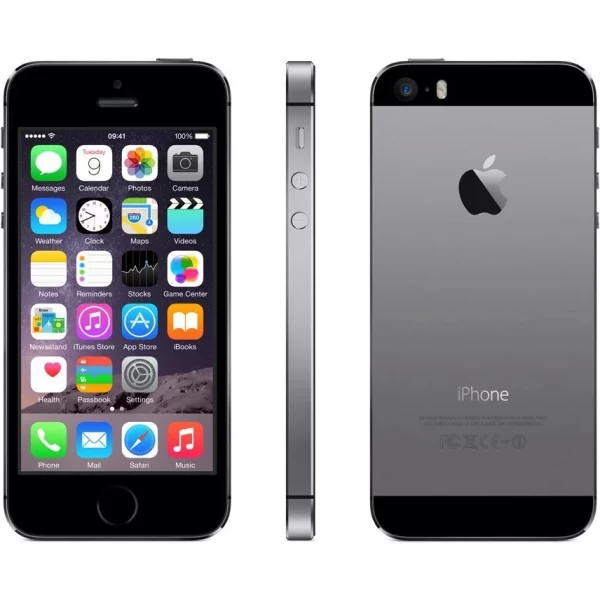
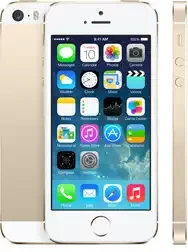
The iPhone 5s, released in 2013, was a significant upgrade to Apple’s smartphone lineup and a highly anticipated device in the Kenyan market. In this blog post, we’ll explore the various aspects of the iPhone 5s, including its design, features, performance, and pricing in the Kenyan context.
Premium Design and Fingerprint Sensor
The iPhone 5s maintained the sleek and premium design that had become synonymous with Apple’s flagship smartphones. The device featured a sturdy aluminum body, available in three distinct color options: space gray, silver, and gold. This elegant and sophisticated aesthetic set the 5s apart from its more colorful sibling, the iPhone 5c.
One of the standout features of the iPhone 5s was the introduction of the Touch ID fingerprint sensor, embedded in the home button. This innovative security feature allowed users to unlock their devices and authorize purchases with a simple touch of their finger, providing a more convenient and secure alternative to traditional passcode-based authentication.
Powerful Performance and Improved Camera
Under the hood, the iPhone 5s was powered by Apple’s new 64-bit A7 processor, which offered a significant performance boost compared to the A6 chip found in the previous generation iPhone 5. This improved processing power, combined with the device’s 1GB of RAM, ensured a smooth and responsive user experience for Kenyan consumers.
The camera on the iPhone 5s also received a notable upgrade, with a 8-megapixel rear-facing sensor and improved low-light performance. The device’s ability to capture 1080p HD video further enhanced its multimedia capabilities, making it a compelling choice for Kenyan users who valued high-quality photography and videography.
iOS 7 and the App Store Ecosystem
The iPhone 5s shipped with iOS 7, which introduced a fresh and modern design language to Apple’s mobile operating system. The new interface, with its flatter aesthetics and vibrant colors, complemented the premium design of the 5s, creating a cohesive and visually appealing user experience.
As with previous iPhone models, the 5s benefited from the robust iOS ecosystem, providing access to a vast library of apps, games, and services through the App Store. This ecosystem continued to be a major selling point for Apple’s devices in the Kenyan market, as it offered a wide range of content and functionality to meet the diverse needs of Kenyan consumers.
Pricing and Availability in Kenya
When the iPhone 5s was first introduced in Kenya, it was priced at a premium level compared to the more affordable iPhone 5c. The base model, with 16GB of storage, was initially sold for around KES 65,000 (approximately $650 at the time), positioning it as a high-end smartphone option in the Kenyan market.
This pricing strategy was in line with Apple’s positioning of the 5s as the flagship device in its smartphone lineup. The company aimed to cater to Kenyan consumers who were willing to pay a premium for the latest and most advanced features, such as the Touch ID fingerprint sensor and the powerful A7 processor.
Adoption and Impact in the Kenyan Market
The iPhone 5s quickly gained traction in the Kenyan market, appealing to a segment of consumers who valued the device’s premium design, performance, and security features. The Touch ID fingerprint sensor, in particular, was well-received by Kenyan users, as it provided a more convenient and secure way to access their devices.
The introduction of the iPhone 5s also helped to solidify Apple’s position in the Kenyan smartphone landscape, as the company continued to offer a range of devices to cater to different consumer segments. The 5s, with its flagship-level specifications and premium pricing, complemented the more affordable iPhone 5c, allowing Apple to address the diverse needs and budgets of Kenyan consumers.
Siri and its Kenyan Adoption
Like the iPhone 5 and 5c, the 5s continued to feature Siri, Apple’s virtual assistant. However, the challenges faced by Kenyan users in terms of Siri’s understanding of local dialects, accents, and cultural nuances remained.
While Siri’s capabilities had improved since its introduction, the assistant still struggled to fully comprehend and respond to the unique linguistic and cultural characteristics of the Kenyan market. This limited the usefulness of Siri for many Kenyan iPhone 5s owners, who often found themselves relying on more traditional methods of interacting with their devices.
Cellular Connectivity and 4G LTE
The iPhone 5s, like its predecessor the iPhone 5, supported 4G LTE cellular connectivity. This was an important feature for Kenyan consumers, as the rollout of 4G networks by local telecommunications providers continued to expand, offering faster data speeds and improved network performance.
The availability of 4G LTE on the iPhone 5s allowed Kenyan users to take advantage of the improved cellular connectivity, enabling them to enjoy a more seamless browsing, streaming, and overall mobile experience on their devices.
Longevity and Continued Support
Despite its premium positioning, the iPhone 5s continued to receive software updates and support from Apple for several years after its initial release. This longevity was a testament to the company’s commitment to providing a consistent and reliable user experience, even on its flagship devices.
Kenyan consumers who purchased the iPhone 5s were able to enjoy the latest iOS updates and security patches, ensuring that their devices remained up-to-date and secure over time. This level of ongoing support helped to extend the usable lifespan of the 5s, making it a more attractive long-term investment for Kenyan buyers.
Conclusion
The iPhone 5s was a significant upgrade to Apple’s smartphone lineup and a highly anticipated device in the Kenyan market. With its premium design, powerful performance, and innovative Touch ID fingerprint sensor, the 5s appealed to Kenyan consumers who were willing to pay a premium for the latest and most advanced features.
The device’s pricing strategy, which positioned it as a high-end smartphone option, helped to solidify Apple’s position in the Kenyan smartphone landscape, complementing the more affordable iPhone 5c and addressing the diverse needs and budgets of Kenyan consumers.
While the challenges faced by Siri in understanding local dialects and cultural nuances remained a limitation for Kenyan users, the iPhone 5s continued to offer a compelling overall package, with its sleek design, impressive performance, and robust iOS ecosystem.
The longevity and ongoing support provided by Apple also helped to extend the usable lifespan of the iPhone 5s, making it a more attractive long-term investment for Kenyan buyers. Overall, the 5s played a significant role in strengthening Apple’s presence in the Kenyan market, offering a premium smartphone experience to those willing to pay for it.
Specs
NETWORK
| Technology | GSM / CDMA / HSPA / EVDO / LTE |
LAUNCH
| Release Date | 2013, September 10. Released 2013, September 20 |
| Status | Discontinued |
BODY
| Dimensions | 123.8 x 58.6 x 7.6 mm (4.87 x 2.31 x 0.30 in) |
| Weight | 112 g (3.95 oz) |
| Build | Glass front (Corning-made glass), aluminum back, aluminum frame |
| SIM | Nano-SIM |
DISPLAY
| Type | IPS LCD |
| Size | 4.0 inches, 44.1 cm2 (~60.8% screen-to-body ratio) |
| Resolution | 640 x 1136 pixels, 16:9 ratio (~326 ppi density) |
| Protection | Corning Gorilla Glass, oleophobic coating |
PLATFORM
| OS | iOS 7, upgradable to iOS 12.5.6 |
| Chipset | Apple A7 (28 nm) |
| CPU | Dual-core 1.3 GHz Cyclone (ARM v8-based) |
| GPU | PowerVR G6430 (quad-core graphics) |
MEMORY
| Card slot | No |
| Internal | 16GB 1GB RAM, 32GB 1GB RAM, 64GB 1GB RAM |
MAIN CAMERA
| Back | 8 MP, f/2.2, 29mm (standard), 1/3.0", 1.5µm, AF |
| Features | Dual-LED dual-tone flash, HDR |
| Video | 1080p@30fps, 720p@120fps |
SELFIE CAMERA
| Front | 1.2 MP, f/2.4, 31mm (standard) |
| Features | face detection, HDR, FaceTime over Wi-Fi or Cellular |
| Video | 720p@30fps |
SOUND
| Loudspeaker | Yes |
| 3.5mm jack | Yes 16-bit/44.1kHz audio |
COMMS
| WLAN | Wi-Fi 802.11 a/b/g/n, dual-band, hotspot |
| Bluetooth | 4.0, A2DP |
| Positioning | GPS, GLONASS |
| NFC | No |
| Radio | No |
| USB | Lightning, USB 2.0 |
FEATURES
| Sensors | Fingerprint (front-mounted), accelerometer, gyro, proximity, compass |
BATTERY
| Type | Li-Po 1560 mAh, non-removable (5.92 Wh) |
MISC
| Models | A1453, A1457, A1518, A1528, A1530, A1533, iPhone6,1, iPhone6,2 |
| Colors | Space Gray, White/Silver, Gold |
Reviews
Disclaimer Note
Disclaimer: We don't guarantee that the information on our page is 100% correct.
